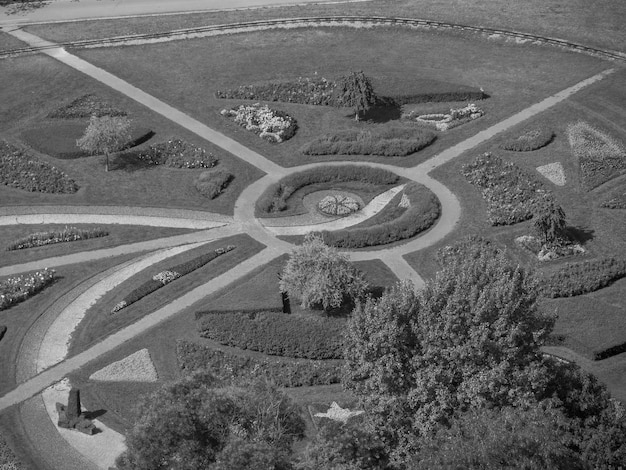Master US Presidents: Major System Guide for Fast Memorization

How to Use the Major System to Memorize 100+ US Presidents in Under 3 Hours: A 2025 Guide is a method turning numbers into consonant sounds, which then are made into words, phrases, and mental images, linking each U.S. president in order for rapid and reliable recall.
Want to impress your friends with an uncanny ability to recite all the U.S. presidents in order? The How to Use the Major System to Memorize 100+ US Presidents in Under 3 Hours: A 2025 Guide offers a powerful technique that lets you precisely do that. It transforms abstract numbers into memorable images, building a mental structure that makes learning and recalling information a breeze.
Unlock Your Memory Potential: The Major System Explained
The Major System, also known as the phonetic number system, is a mnemonic technique used to memorize numbers by converting them into consonant sounds and further into words. It’s a method that has been refined over centuries and is surprisingly effective for tasks like memorizing phone numbers, historical dates, and even, yes, the order of U.S. presidents.
This guide will give you a step-by-step walkthrough of adapting the Major System so you can swiftly commit to memory all the U.S. presidents—even those tricky ones with unusual names—enhancing your memory skills while diving into a bit of American history.
Understanding the Core Principles
The Major System hinges on associating each digit with a consonant sound. This is its foundation.
Here’s the standard assignment:
- 1 = t or d
- 2 = n
- 3 = m
- 4 = r
- 5 = l
- 6 = sh, ch, j, soft g
- 7 = k, hard g, q
- 8 = f, v
- 9 = p, b
- 0 = s, z
Vowels (a, e, i, o, u) and the letters h, w, and y are ignored because they don’t represent numbers in this system. The reason these letters are omitted is because they do not have an associated number.
Crafting Words from Numbers
Once you grasp the code, translate numbers into words by inserting vowels. For example, 12 could be “tin,” 14 could be “tar,” and 20 could be “nose.” The goal is to choose words that are not merely phonetic matches but also ones that spark vivid mental images.
By mastering these basics, you create a bridge from abstract numerals to memorable, sensory-rich concepts. Then, you’re ready to tackle the list of presidents.
In this section, we’ve learned the key principles of the Major System, setting the stage by converting numbers into consonant sounds and, subsequently, into words. This critical foundation prepares us to apply this technique to the task of memorizing the U.S. presidents effectively.
Assigning Numbers to Presidents
Before encoding, you must assign each president a number from 1 to however many presidents you want to memorize. This forms the backbone of your memory journey, turning a list of names into a structured, numbered sequence.
Each president now has a numeric identifier, ready for conversion via the Major System, setting them up to turn into something more memorable than just a name.
Breaking Down the Presidents’ Sequence
With the Major System framework in place, you apply the digit-to-sound mapping to create mental images for each president.
For example, George Washington, as number 1, could use words starting with “t” or “d.” If you go for “tie”, you might picture him severing ties with England.
Here are a few more examples:
- John Adams (2): “Noon” – Picture Adams working until noon under pressure.
- Thomas Jefferson (3): “Ma”– Imagine Jefferson calling for his mother as he writes the Declaration of Independence.
- James Madison (4): “Ray” – Picture a ray of light illuminating Madison as he drafts the Constitution.
These vivid scenes link the Major System conversion directly to each president, so the numeric code is instantly transferrable and easier to remember.
This section has detailed the strategy of numerically identifying each president and crafting imaginative images using the Major System. This approach transforms a mere list of names into a visually stimulating mental landscape, greatly aiding in their recall.

Creating Memorable Images
Turning the phonetic codes into unforgettable images is where the Major System shines. The goal is to create pictures so outlandish or personal that they stick in your mind. This transforms abstract presidents into something real.
These are the basic principles that follow this train of thought:
Heightening Sensory Details
Amplify your images with sensory details: smells, sounds, textures, and tastes. The more senses you engage, the more firmly the image gets lodged in memory.
Consider Harry Truman (33): Instead of merely seeing “Mama,” picture Truman’s mother baking pies in his kitchen, the aroma of warm apples filling the air. Include everything you can.
Incorporating Action and Emotion
Incorporate action or strong emotions. These elements increase the image’s impact and memorability.
Think of Abraham Lincoln (16): Instead of just “Dish,” imagine Lincoln dramatically throwing a dish across the room in a moment of anger during a cabinet meeting. The emotion and movement turn a simple coded word into a visual that’s easily recalled.
Making it Personal
Weaving personal details or humorous elements into your images can make them particularly sticky. If you laugh or relate, the image becomes much easier to remember.
Take Bill Clinton (42): If “Rain” is your code, imagine Clinton getting drenched in a downpour while playing his saxophone on your front lawn. The personal touch—something happening on *your* lawn—and the absurdity will cement the image in memory.
Throughout this section, we dissected how to morph phonetic codes into vivid, unforgettable images by emphasizing sensory details, incorporating action and emotion, and encouraging personal connections. These strategies significantly amplify the memorability of each president, turning names into lasting pictorial memories.
Linking the Images into a Journey
To recall all the presidents in order, link your images in a sequential story or journey. Each scene should naturally flow into the next.
This method ensures that remembering one president triggers memory of the next, creating a linear, easily navigable mental landscape. This is how you can ensure you get from one president to another accurately.
Constructing Your Presidential Narrative
Imagine a path with distinct locations representing each president. As you mentally walk this path, interact with each president’s image, making the journey dynamic and engaging.
Start with George Washington (1): Picture him, with his “Tie,” standing at the entrance to a grand hall. He’s cutting ties with the British Monarchy.
Next, John Adams (2): Inside the hall, under the “Noon” sun, Adams toils away at his desk. He is hard at work while sweat drips down his brow.
Then, Thomas Jefferson (3): Further down the hall, Jefferson calls out “Ma” for help as he struggles over his writing. He needs help to finish his declaration.
Following him, James Madison (4): Down the hall, Madison is bathed in a “Ray” of light as he works on the constitution.
By placing these images in a logical order and linking them with a clear path, you create a memorable narrative.
This section has focused on linking the individual images into a cohesive and memorable journey, essential for accurately recalling the U.S. presidents in sequence. By connecting each vivid scene along a mental path, we’ve created a robust narrative framework that ensures easy and sequential recall.

Practice and Refinement
Consistently practicing your mental journey cements the images and strengthens recall. The more you rehearse, the easier it becomes to reel off the presidents in perfect order.
This technique, like any other memory tool, requires continuous revision to stay sharp and effective. If you don’t practice, you will forget.
Regular Recall Sessions
Set aside time each day to mentally walk through your list of presidents. Start slow, focusing on the details of each image, and gradually increase your pace.
Begin by running through the list at least twice a day. Over time, the images will become more deeply etched.
Troubleshooting and Adjustments
If you stumble on certain presidents, revisit and refine their corresponding images. Alter actions, enhance colors, or add new sensory details to shore up weak spots.
If you find that you’re struggling to remember a certain president, use your original plan and build off of it. Add more details to the president.
Advanced Techniques
Once comfortable with the basic order, introduce variations. Try reciting the presidents backward, or picking them out at random. This reinforces your memory from all angles.
This section emphasized the importance of consistent practice and refinement to solidify presidential memories. By conducting regular recall sessions, troubleshooting weak spots, and integrating advanced techniques, you enhance your ability to accurately and rapidly recall each president.
Troubleshooting Common Issues
Challenges like image distortion or getting stuck are common when using memory techniques. Learning how to pinpoint and resolve these issues is key to mastery.
Even experts get stuck once in a while, the difference between an expert and a beginner is that they know how to adjust the strategy.
Image Fading
If an image loses its clarity, revisit it immediately. Exaggerate its details, add new sensory elements, or make the action more compelling.
Once you have re-established the image, remember to continuously review it.
Sequence Breaks
If you lose the sequence, backtrack to the last secure image and try to trigger the next one with a different angle or connection.
If that doesn’t work, you might have to completely rebuild the structure.
Name-Face Disconnect
If you recall the image but not the corresponding president, introduce a direct link—for instance, picture the president wearing the item associated with the code word.
That way, the image is directly associated from the moment you make it.
This section has provided practical strategies for troubleshooting common issues encountered with memory techniques, such as image fading, sequence breaks, and name-face disconnects. By implementing these corrective measures, you can maintain the integrity and accessibility of your presidential memory journey.
| Key Concept | Brief Description |
|---|---|
| 🔢 Major System | Converts numbers into consonant sounds, then into memorable words and images. |
| 🧠 Image Association | Links each president to a vivid image derived from the Major System. |
| 🚶 Memory Journey | Arranges images along a mental path for sequential recall. |
| 🔄 Regular Practice | Reinforces memories and ensures long-term retention through consistent review. |
Frequently Asked Questions
▼
The Major System might seem daunting initially, but its core is straightforward: assigning sounds to digits. With a little practice and creativity, you’ll quickly master converting numbers into memorable words and images.
▼
Yes, the Major System provides a structured framework for memorization. By linking each president to a unique image and organizing these images into a journey, it significantly enhances factual recall.
▼
The time varies depending on individual memory skills and dedication to practice. However, with consistent application of the techniques outlined here, memorizing all U.S. presidents in under three hours is very feasible.
▼
Don’t worry; memory lapses happen. Just revisit the image or point in your journey and reinforce it. Try adding more sensory details or emotional elements to make it stick better.
▼
Absolutely! The Major System is versatile and can be used to memorize various kinds of numerical data, such as dates, phone numbers, historical facts, and even PIN codes. It’s a great tool for boosting overall mnemonic skills.
Conclusion
The Major System provides a comprehensive approach for memorizing the U.S. presidents quickly and accurately. By converting numbers into images and linking them in a memorable journey, you can enhance your retention and impress others with your knowledge of American history.





